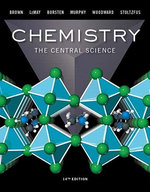?Account for the following observations: (a) \(\mathrm{H}_{3} \mathrm{PO}_{3}\) is a diprotic acid. (b) Nitric acid is a strong aci
Chapter 22, Problem 22.6(choose chapter or problem)
Account for the following observations:
(a) \(\mathrm{H}_{3} \mathrm{PO}_{3}\) is a diprotic acid.
(b) Nitric acid is a strong acid, whereas phosphoric acid is weak.
(c) Phosphate rock is ineffective as a phosphate fertilizer.
(d) Phosphorus does not exist at room temperature as diatomic molecules, but nitrogen does.
(e) Solutions of \(\mathrm{Na}_{3} \mathrm{PO}_{4}\) are quite basic.
Text Transcription:
H3PO3
Na3PO4
Unfortunately, we don't have that question answered yet. But you can get it answered in just 5 hours by Logging in or Becoming a subscriber.
Becoming a subscriber
Or look for another answer
